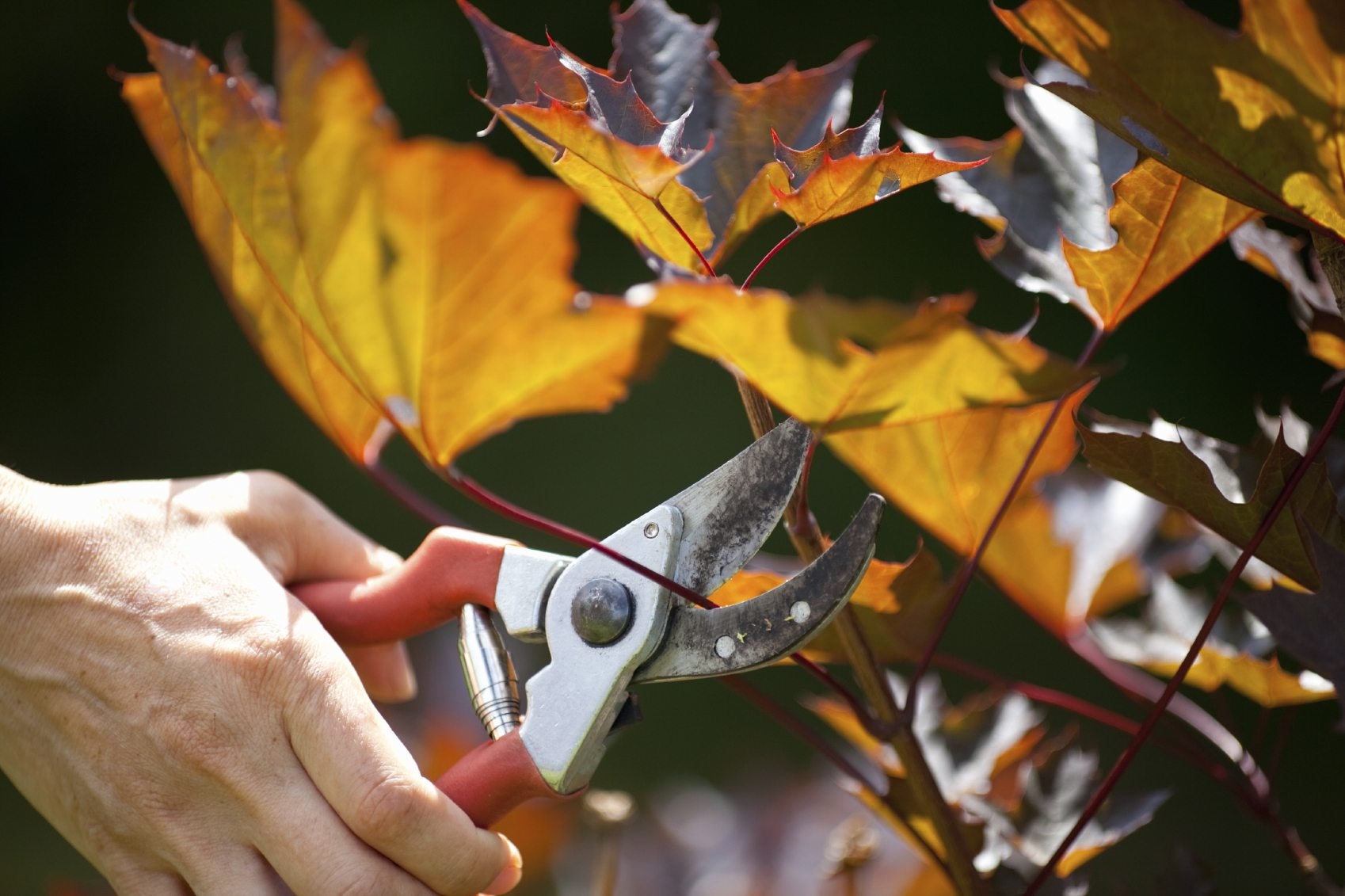Maple Tree Pruning – How And When To Prune A Maple Tree


The tree in the backyard that blazes with red, orange, and yellow foliage in autumn is most likely a maple. Maple trees are known for their brilliant fall color as well as the ease with which they “bleed” sap.
The species’ tendency to lose sap from wounds makes gardeners question the wisdom of pruning maple trees. However, maple tree pruning is an essential part of maple tree maintenance. It’s important to learn how to prune maple trees and to pick the best time for pruning maples.
When to Prune a Maple Tree
Many gardeners are confused about when to prune a maple tree. In late winter, when the days are warm and the nights are cold, root pressure causes sap to flow from any wound made in the bark of the tree. This makes it look as if the tree is suffering.
However, maple tree pruning in winter generally won’t hurt a mature tree. You would have to remove an entire limb for the loss of sap to negatively impact a fully grown tree. If the tree is just a sapling, however, loss of sap may cause problems. You can avoid this issue if you wait until summer to prune maples.
Once the leaf buds open, the sap is no longer under pressure and won’t leak out from pruning wounds. For this reason, many gardeners say that the best time for pruning maples is in summer after the tree is fully in leaf.
How to Prune Maple Trees
Gardeners trim maple trees for a variety of reasons. Regular maple tree pruning helps keep a tree the desired size and stops a tree from encroaching on its neighbors.
Pruning also assists the tree develop of a sound branch structure. Carefully removing branches can reduce or eliminate structural issues in a tree. It can also open up the center of the tree to let sun and air move through the canopy. This prevents certain types of diseases.
Sign up for the Gardening Know How newsletter today and receive a free copy of our e-book "How to Grow Delicious Tomatoes".
When you are pruning maple trees, it is always a good idea to remove broken, diseased, or dead branches. Otherwise, decay-producing fungi can infect healthy parts of the trees.

Teo Spengler is a master gardener and a docent at the San Francisco Botanical Garden, where she hosts public tours. She has studied horticulture and written about nature, trees, plants, and gardening for more than two decades, following a career as an attorney and legal writer. Her extended family includes some 30 houseplants and hundreds of outdoor plants, including 250 trees, which are her main passion. Spengler currently splits her life between San Francisco and the French Basque Country, though she was raised in Alaska, giving her experience of gardening in a range of climates.